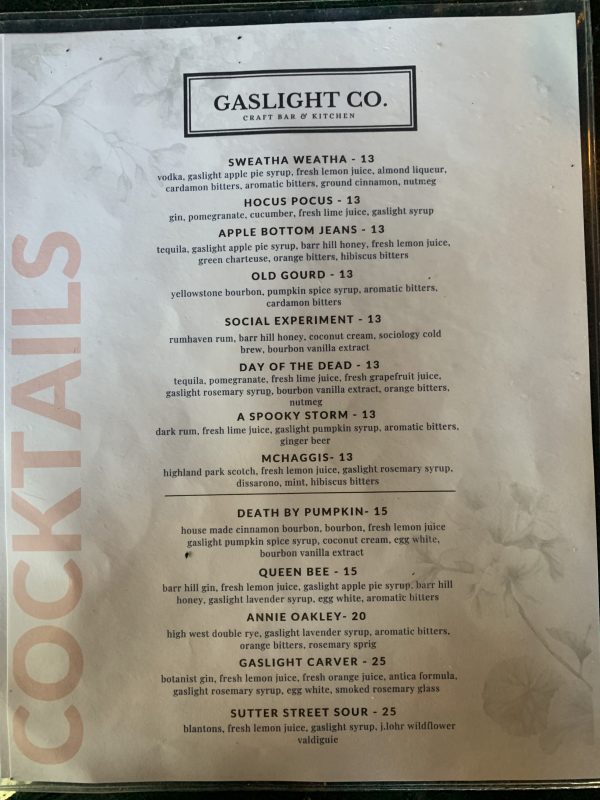NISHEL Travel Toiletry Bag for women, Portable Hanging Organizer for Travel-Sized Shampoo, Conditioner, Brushes Set, makeup Accessories, Medium Size, Pink
$16.19 (as of April 18, 2025 04:42 GMT +00:00 - More info)Tune into Tourism: Insights from Live Interactive Tutorial shines a spotlight on the vibrant world of food and drink tourism, a trend proving to be much more than a fleeting fad. Through this engaging video, viewers gain valuable insights from industry experts like Sandra Reid, Carina Contini, and Scott Fraser, who emphasize the significance of local ingredients and the compelling stories they carry. Their shared experiences underscore the importance of connecting with seasonal produce and leveraging storytelling to enhance visitor experiences.
In Scotland, where 92% of visitors indulge in food-related activities, the narrative around food provenance takes center stage. Guests like Carina Contini highlight the benefits of understanding ingredient origins and seasonality, making it both cost-effective and enriching for tourists. Scott Fraser’s stories about unique local foods inspire businesses to focus on quality and simplicity, thereby enhancing the overall food tourism experience. With contributions from various experts, this tutorial offers a wealth of knowledge for anyone looking to make the most of Scotland’s thriving food and drink tourism scene.

Overview of Tune into Tourism Interactive Tutorial
Summary of the video tutorial
The “Tune into Tourism Interactive Tutorial” delves into the significant aspects of food and drink tourism, stressing how these elements enrich visitor experiences. Experts from the hospitality industry discuss strategies and insights to leverage local food provenance, seasonality, and storytelling to create memorable visitor experiences. This particular video emphasizes the importance of integrating the story behind local ingredients into the dining experience to engage visitors more deeply.
Key insights highlighted
Key insights highlighted include the enduring appeal of food and drink tourism, with an astounding 92% of visitors to Scotland partaking in food-related activities. The tutorial further explores the importance of utilizing local ingredients, emphasizing seasonality, and the power of storytelling to elevate the visitor’s journey. Professionals Sandra Reid, Carina Contini, and Scott Fraser provide valuable perspectives on sourcing locally, collaborating with suppliers, and the remarkable impact of illustrating the origins and journey of food to visitors.
Current Trends in Tourism
Food and Drink Tourism
Food and drink tourism has grown into an essential component of the tourism industry. It’s more than just dining out; it’s about creating unique culinary experiences that reflect the local culture and heritage. Conversations in the tourism sector indicate that visitors expect more than just a meal; they seek stories and connections with their food, making food and drink tourism an enduring trend.
Visitor behavior and preferences
Modern travelers are increasingly curious about the origins of their food and have a strong preference for locally sourced ingredients. They are not just consumers but participants in rich, cultural experiences that connect them to the locale. This shift in behavior underscores the importance for businesses within the tourism sector to embrace and highlight their culinary offerings, aligning them with the desires for authenticity and local taste.
The Role of Food and Drink in Visitor Experiences
Importance of culinary experiences
Food is undeniably at the heart of the travel experience. It serves as a vital bridge to the culture, traditions, and lifestyle of a place. Culinary experiences allow visitors to engage with the local environment in a deeply sensory way, turning meals into memorable stories. Unique food offerings can turn a simple trip into an exceptional journey, leaving lasting impressions through taste, aroma, and the overall dining atmosphere.
Statistics on food-related activities by visitors
Statistics reveal that a staggering 92% of visitors to Scotland engage in food-related activities, such as dining at restaurants, visiting cafes, and enjoying local bars. These numbers underline the importance of culinary experiences in the tourism industry, highlighting them as a significant driver of visitor satisfaction and repeat visits. By tapping into this insight, businesses can tailor their offerings to meet the high demand for authentic food experiences.
Leveraging Local Food Provenance
Storytelling to enhance visitor experiences
Storytelling plays a pivotal role in enhancing visitor experiences. By weaving narratives around local ingredients and traditional recipes, businesses can create a rich tapestry that captures the visitor’s imagination. Sharing the story behind a dish or the journey of a particular ingredient from farm to table adds layers of meaning and connection, making the culinary experience far more engaging and memorable.
Role of local ingredients in storytelling
Local ingredients are the stars of these stories, intensifying the sense of place and authenticity. The provenance of food underscores its freshness, quality, and ties to the local environment. It allows businesses to showcase regional specialties and traditional culinary practices, thereby, enriching the visitor’s understanding and appreciation of the destination.

Insights from Sandra Reid
Significance of sourcing local ingredients
Sandra Reid emphasizes the considerable benefits of sourcing local ingredients, stating it not only supports the local economy but also enhances the authenticity and quality of the visitor experience. By featuring local produce, businesses can tell compelling stories about their dishes, origins, and the hard work of local producers.
Collaborating with suppliers
Reid highlights the importance of collaborations between businesses and their suppliers. She encourages establishments to learn from suppliers about the origins and stories behind their products. This collaborative effort ensures that the narrative shared with visitors is rich, informative, and engaging. Open communication with suppliers also fosters trust and ensures a consistent supply of high-quality ingredients.
Carina Contini’s Approach
Connecting with seasonal produce
Carina Contini shares her dedication to aligning her menu with seasonal produce. She believes that understanding and utilizing what is in season not only ensures the freshest ingredients but also connects the dining experience to the rhythm of the natural world. This approach often results in surprising cost-effectiveness, as seasonal ingredients tend to be more abundant and therefore less expensive.
Educating visitors about ingredient origins
Contini places significant emphasis on educating visitors about the origins of the ingredients used in her dishes. She believes that this knowledge deepens the dining experience, making it more than just a meal. By understanding where food comes from and the effort involved in its production, visitors gain a greater appreciation and connection to their meal.
Using a kitchen garden and beekeeping
Contini’s practice of maintaining a kitchen garden and beekeeping is a testament to her commitment to fresh and local produce. This direct involvement not only ensures high-quality ingredients but also provides fascinating stories to share with visitors. The garden and beekeeping activities illustrate the amount of effort and dedication involved in producing ingredients, enhancing visitor engagement and satisfaction.
Benefits of Understanding Seasonality
Cost-effectiveness of seasonal produce
Aligning with seasonal produce can lead to significant cost savings. Seasonal ingredients are typically more plentiful and thus less expensive. Businesses can leverage this cost-effectiveness to offer fresh and high-quality dishes without inflating prices, ensuring both profitability and customer satisfaction.
Enhancing quality of visitor experiences
Using fresh, seasonal ingredients can vastly improve the quality of dishes served, thereby enhancing the visitor’s overall experience. Fresh produce has superior taste and nutritional value, making meals more delightful. This approach also ties the dining experience to nature’s cycles, providing a deeper, more meaningful connection to the locale.
Investing in Staff for Better Customer Journeys
Training staff on ingredient stories
Investment in staff training is critical. By educating staff about the stories and origins of ingredients, they can relay these narratives to visitors, greatly enhancing the dining experience. Staff who can engage customers with interesting stories about the food they are about to enjoy make the experience more interactive and enriching.
Impact on customer satisfaction
Well-trained staff can significantly boost customer satisfaction. When visitors are informed and entertained by the stories behind their meals, their engagement and enjoyment levels rise. This attentiveness and connection can lead to higher customer loyalty and positive word-of-mouth, benefiting the business in the long run.
Unique Food Stories: Scott Fraser’s Perspective
Creation of special cheddar in Scotland
Scott Fraser brings attention to unique food stories such as the creation of a special type of cheddar in Scotland. This cheese, resulting from a blend of local practices and lifestyle, tells a fascinating story about community and tradition. Such narratives add immense value to the product, transforming it from mere food into an experience steeped in local culture.
Influence of local lifestyle practices on food
Fraser also highlights how local lifestyle practices influence food production and culinary traditions. Examples of simple yet specialist restaurants, such as El Canibal in San Sebastian, illustrate how focusing on local ingredients and straightforward preparation techniques can produce outstanding results. These practices underscore the importance of simplicity and authenticity in creating high-quality dining experiences.
Conclusion
Encouraging straightforward practices
The insights shared in this tutorial encourage straightforward practices in food tourism. By focusing on quality ingredients, seasonality, and the powerful tool of storytelling, businesses can create enriching, memorable experiences for visitors. Simple yet meaningful practices such as detailed menu descriptions and sharing the origins of ingredients can vastly improve customer engagement and satisfaction.
Importance of local food stories in food tourism
Local food stories are crucial in the realm of food tourism. They add depth and context to the culinary experience, making it more than just a meal but a journey into the heart of the locale. By embracing and conveying these stories, tourism businesses can provide richer, more immersive experiences, ultimately enhancing visitor satisfaction and loyalty.






